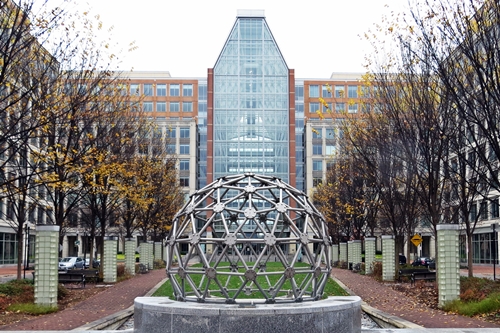13 February 2018. U.S. patents were awarded to a biotechnology company developing therapies using the genomic editing process known as Crispr to create immune system cells with proteins for attacking cancer cells. Patents numbered 9,855,297 and 9,890,393 were awarded on 2 January and today respectively, by the U.S. Patent and Trademark Office to 3 inventors, and assigned to Cellectis, based in New York and Paris.
Cellectis develops cancer treatments that harness the immune system by breaking down defenses tumors create to prevent the body’s immune system from fighting the disease. The company’s platform builds on recent developments that take T-cells, white blood cells from the immune system, and reprogram the cells through genetic engineering to find and kill cancer cells. The engineered T-cells become hunter cells, containing proteins known as chimeric antigen receptors that act like antibodies. These modified chimeric antigen receptor or CAR T-cells are infused into the patient, seeking out and binding to proteins associated with the cancer.
Most current CAR T-cell methods genetically engineer a patient’s own T-cells, then re-infuse the altered T-cells back into the individual. Cellectis’s process is designed to produce off-the-shelf CAR T-cell treatments, it calls Universal CAR T-cells, or UCARTs. These treatments use T-cells from healthy donors, rather than a patient’s own T-cells, then are genetically engineered to match the attributes of specific cancer types.
Both patents list as inventors Cellectis executives Philippe Duchateau, the company’s chief scientist, with CEO André Choulika, and early discovery director Laurent Poirot. And both patents cover the use of the genomic editing technique Crispr, for clustered regularly interspaced short palindromic repeats. The technique is based on bacterial defense mechanisms that use RNA to identify and monitor precise locations in DNA. The actual editing of genomes with Crispr employs enzymes that cleave DNA strands at the desired points, with Crispr-associated protein 9, or Cas9, the enzyme used most often.
The earlier patent, dated 2 January, covers Crispr-Cas9 editing of T-cells, where messenger RNA guides Cas9 enzymes to at least one target in the T-cell genome. At that point Cas9 edits the T-cell genome at the target site, allowing for production of modified T-cells with the desired properties for immunotherapies. The 13 February patent also covers Crispr editing of T-cells, but allows for variations from single edits, including targeting 2 places in the DNA simultaneously, and delivering an inactive enzyme to the target site, then activating the edit inside the T-cell.
Cellectis applies its UCART technology mainly to blood-related cancers. In December 2017, the company reported initial findings from early-stage clinical trials of UCART cells in patients with B-cell acute lymphoblastic leukemia, conducted with other pharmaceutical companies. In the study of adults, 5 of 7 participants with relapsed or stubborn disease achieved molecular remission of the leukemia, where few cancer cells remain, after 28 days. A similar test with children show all 5 participants achieved molecular remission of their disease.
The clinical studies reported few safety problems with the UCART treatments, but that was not always the case. As reported in Science & Enterprise in September 2017, both trials were stopped by FDA when a patient died from cytokine-release syndrome, a complex of immune-system reactions to immunotherapies that worsened with complications, and who later did not respond to treatment. FDA lifted the clinical hold in November 2017, allowing the trials to continue.
More from Science & Enterprise:
- Engineered T-Cells Show Extended Leukemia Remission
- T-Cell Therapy Company Gains $100M in Venture Funds
- CAR T-Cells Shown Effective in Long-Term Studies
- Genome Editing Enhances CAR T-Cells to Fight Cancer
- Biotech, Cancer Center Partner on T-Cell Research
* * *


 RSS - Posts
RSS - Posts
You must be logged in to post a comment.